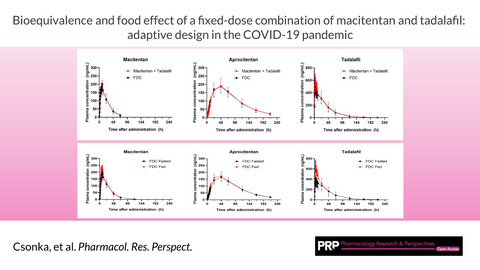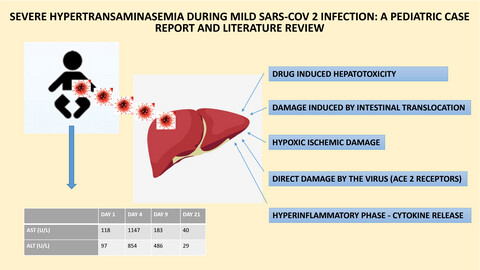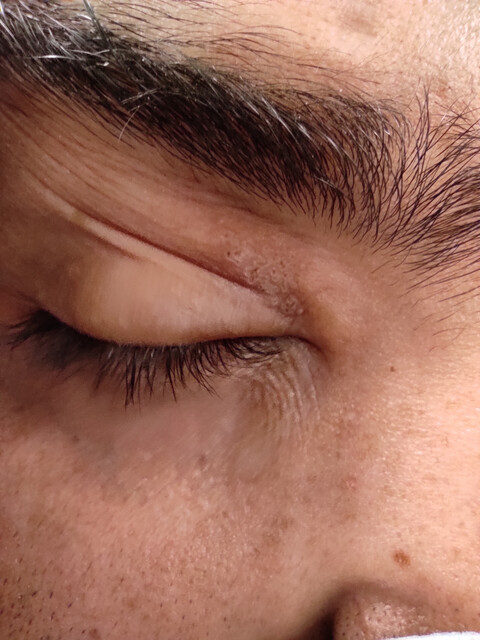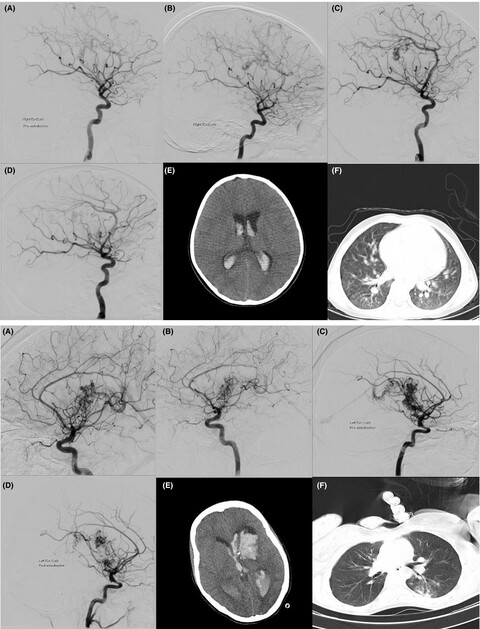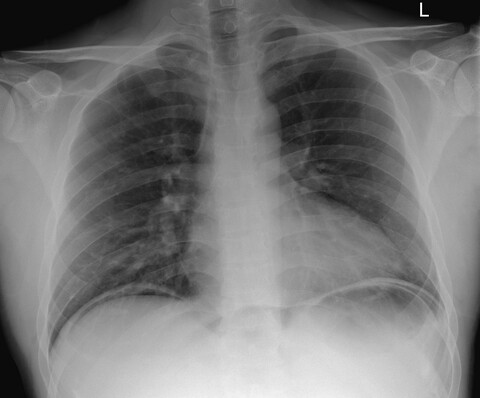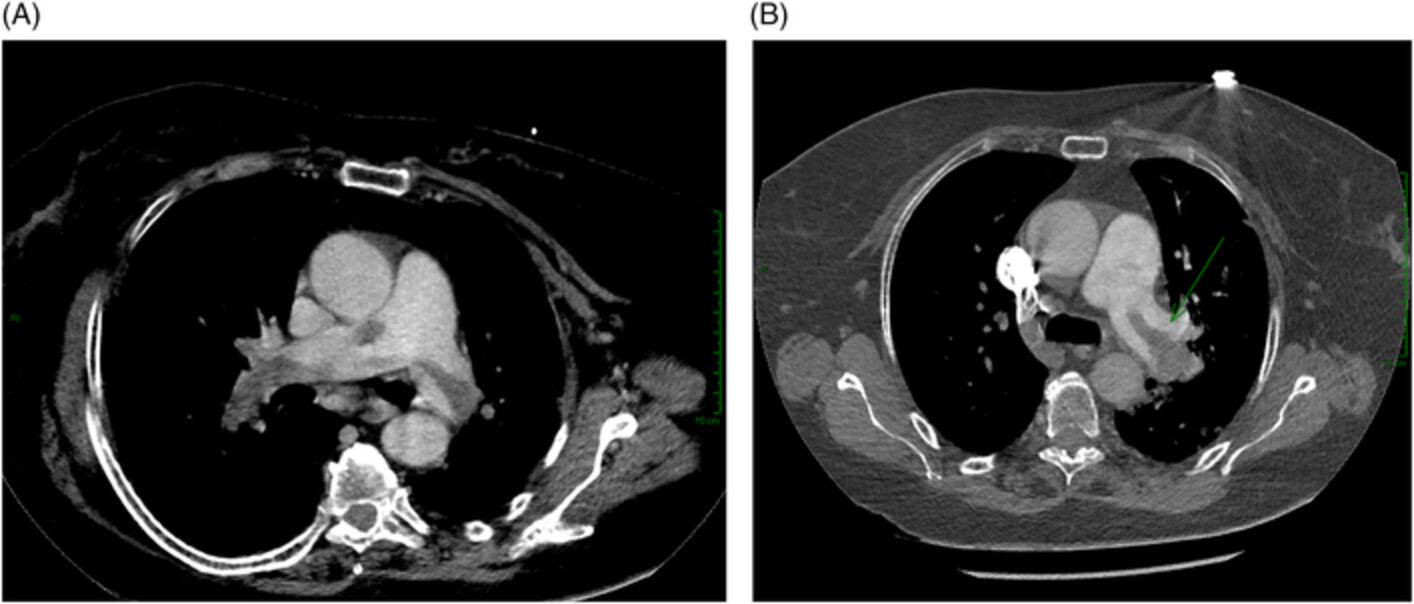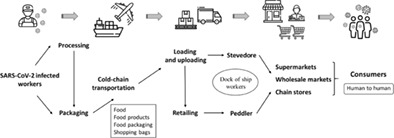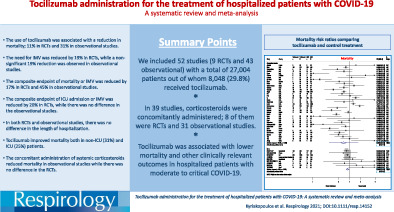Novel Coronavirus Outbreak Oct 1 - Oct 8 2021
Most recent articles (newest articles listed first)
Plasma P-selectin is an early marker of thromboembolism in COVID-19
Attenuated humoral immune response following anti-SARS-CoV-2 vaccine in heavily pretreated patients with multiple myeloma and AL amyloidosis
‘We are all in the same boat’: How societal discontent affects intention to help during the COVID-19 pandemic
COVID‐19 Forced Rapid Changes in Education, but Which Changes Should We Keep?
- CSA News
- 44-47
- 10.1002/csan.20586
Insight into pain syndromes in acute phase of mild‐to‐moderate COVID‐19: Frequency, clinical characteristics, and associated factors
Breakthrough SARS-CoV-2 infections among BBV-152 (COVAXIN®) and AZD1222 (COVISHIELDTM) recipients: Report from the eastern state of India
- Journal of Medical Virology
- 1201-1205
- 10.1002/jmv.27382
Dysphagia, Dysphonia, and Dysarthria Outcomes Among Adults Hospitalized With COVID-19 Across Ireland
- The Laryngoscope
- 1251-1259
- 10.1002/lary.29900
Impact of COVID-19 on Otolaryngology Literature
- The Laryngoscope
- 1364-1373
- 10.1002/lary.29902
SARS‐CoV‐2 spike protein harnesses SNX27‐mediated endocytic recycling pathway
- MedComm
- 798-809
- 10.1002/mco2.92
Graphical Abstract
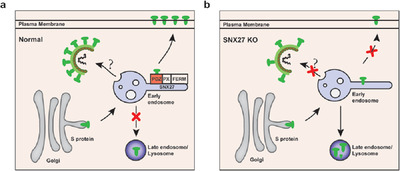
Proposed model showing SNX27 promotes intracellular trafficking of S protein and viral production. (a) SNX27, via its PDZ domain, interacts with S protein and promotes endosome-to-plasma membrane trafficking of S protein. SNX27 could also promote the production of SARS-CoV-2 virions in host cells, although the mechanism remains poorly defined.
(b) Depletion of SNX27 impairs endosome-to-plasma membrane trafficking of S protein, leading to its lysosomal degradation.
Bioequivalence and food effect of a fixed‐dose combination of macitentan and tadalafil: Adaptive design in the COVID‐19 pandemic
High prevalence of extended‐spectrum beta‐lactamase organisms and the COVID‐19 pandemic impact on donor recruitment for fecal microbiota transplantation in Hong Kong
Changes in influenza and other respiratory virus activity during the COVID‐19 pandemic—United States, 2020–2021
Divergent impacts of tocilizumab and colchicine in COVID‐19‐associated coagulopathy: the role of alpha‐defensins
The relationship between CRP at admission and thorax CT findings in patients diagnosed with COVID‐19
Diagnostic value of white blood cell parameters for COVID‐19: Is there a role for HFLC and IG?
Decentralisation in Times of Crisis: Asset Or Liability? The Case of Germany and Italy During Covid‐19
Child sexual abuse and Covid‐19: Side effects of changed societies and positive lessons for prevention
Impact of major bleeding and thrombosis on 180‐day survival in patients with severe COVID‐19 supported with veno‐venous extracorporeal membrane oxygenation in the United Kingdom: a multicentre observational study
Cutaneous adverse reactions after COVID-19 vaccines in a cohort of 2740 Italian subjects: An observational study
Platelet trends after Covid‐19 vaccination in patients with chronic or persistent immune thrombocytopenia
The impact of COVID‐19 pandemic on access to treatment for children with cancer in India and treating center practices
- Cancer
- 579-586
- 10.1002/cncr.33945
The impact of the COVID‐19 pandemic on pediatric cancer care
- Cancer
- 456-457
- 10.1002/cncr.33946
Pain catastrophizing mediates rapid benefits of accessing in‐person chiropractic care during the COVID‐19 lockdown
Telehealth genetic services during the COVID‐19 Pandemic: Implementation and patient experiences across multiple specialties in Nebraska
SARS‐CoV‐2 rapid antigen test in comparison to RT‐PCR targeting different genes: A real‐life evaluation among unselected patients in a regional hospital of Italy
- Journal of Medical Virology
- 1190-1195
- 10.1002/jmv.27378
Acute SARS‐CoV‐2 alpha variant infection leading to placental insufficiency and fetal distress
- Journal of Medical Virology
- 1196-1200
- 10.1002/jmv.27379
Reply
Phase angle and overhydration are associated with post‐extubating dysphagia in patients with COVID‐19 discharged from the ICU
Multisystem inflammatory syndrome in a male adolescent after his second Pfizer‐BioNTech COVID‐19 vaccine
- Acta Paediatrica
- 125-127
- 10.1111/apa.16141
Perinatal and postpartum care during the COVID‐19 pandemic: A nationwide cohort study
- Birth
- 243-252
- 10.1111/birt.12594
‘Stream and Learn’: An Experiment to Reconnect Design Students with Theoretical Contents during the Pandemic
Pustular psoriasis flare‐up in a patient with COVID‐19
Acceptability of Vaccines Against Preventable Infections Including Coronavirus Disease 2019 Among Patients With Rheumatic Disease
Loneliness in older adult mental health services during the COVID‐19 pandemic and before: Associations with disability, functioning and pharmacotherapy
Response to letter to the editor regarding “Multi-Disciplinary collaborative consensus guidance statement on the assessment and treatment of fatigue in patients with Post-Acute sequelae of SARS-CoV-2 infection (PASC)”
- PM&R
- 1439-1440
- 10.1002/pmrj.12719
Aerosol Loading and Radiation Budget Perturbations in Densely Populated and Highly Polluted Indo‐Gangetic Plain by COVID‐19: Influences on Cloud Properties and Air Temperature
From “getting things right” to “getting things right now”: Developing COVID-19 guidance under time pressure and knowledge uncertainty
Changes in 25‐hydroxyvitamin D levels post‐vitamin D supplementation in people of Black and Asian ethnicities and its implications during COVID‐19 pandemic: A systematic review
Understanding the association between sleep, shift work and COVID‐19 vaccine immune response efficacy: Protocol of the S‐CORE study
Anxiety and psychosocial impact during coronavirus disease 2019 in home dialysis patients
- Nephrology
- 190-194
- 10.1111/nep.13978
Changes in awareness on face mask use in Korea
COVID-19 vaccination in patients with heart failure: a position paper of the Heart Failure Association of the European Society of Cardiology
Lung squamous cell carcinoma with hemoptysis after vaccination with tozinameran (BNT162b2, Pfizer-BioNTech)
- Thoracic Cancer
- 3072-3075
- 10.1111/1759-7714.14179
The COVID‐19 pandemic reduced paediatric emergency department visits but did not significantly increase urgent cases
- Acta Paediatrica
- 130-132
- 10.1111/apa.16138
The role of contemporary digital tools and technologies in COVID‐19 crisis: An exploratory analysis
COVID-19 and the global need for knowledge on nurses' health
Reshape and secure HCC managing during COVID‐19 pandemic: A single centre analysis of four periods in 2020 versus 2019
- Liver International
- 3028-3032
- 10.1111/liv.15077
Covid and China's BRI in Iraq and Syria
Impact of COVID‐19 on public health nursing student learning outcomes
Evaluation of Israeli healthcare workers knowledge and attitudes toward the COVID‐19 vaccine
The pandemic provides a pathway: What we know and what we need to know about using COVID positive donors
Severe hypertransaminasemia during mild SARS‐CoV‐2 infection: A pediatric case report and literature review
Elevated acute phase proteins affect pharmacokinetics in COVID‐19 trials: Lessons from the CounterCOVID ‐ imatinib study
Increased risk for COVID-19 breakthrough infection in fully vaccinated patients with substance use disorders in the United States between December 2020 and August 2021
- World Psychiatry
- 124-132
- 10.1002/wps.20921
Business as usual during the COVID‐19 pandemic? Reflections on state‐wide trends in maternity telehealth consultations during lockdown in Victoria and New South Wales
Type I interferon response and vascular alteration in chilblain-like lesions during the COVID-19 outbreak*
Lessons from the field: The role of agility in a coproduction project encompassing the COVID‐19 pandemic
- Health Expectations
- 499-505
- 10.1111/hex.13372
Early epidemiological investigations: World Health Organization UNITY protocols provide a standardized and timely international investigation framework during the COVID‐19 pandemic
Low anti‐SARS‐CoV‐2 S antibody levels predict increased mortality and dissemination of viral components in the blood of critical COVID‐19 patients
Labor market effects of COVID‐19 in Sweden and its neighbors: Evidence from administrative data
- Kyklos
- 512-526
- 10.1111/kykl.12282
Seasonal UV exposure and vitamin D: association with the dynamics of COVID‐19 transmission in Europe
- FEBS Open Bio
- 106-117
- 10.1002/2211-5463.13309
Graphical Abstract
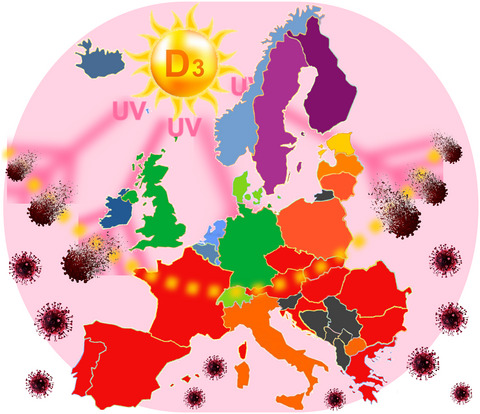
We observed a strong correlation of UV exposure with COVID-19 incidences for 26 European countries. Exposure–lag–response association analysis revealed that UV exposure had a significant delayed effect on COVID-19 incidences. Meta-analysis of vitamin D levels in COVID-19 suggests that low vitamin D level is a critical risk factor for COVID-19. In conclusion, low UV exposure could affect the required vitamin D production in the body, which substantially impacts COVID-19 transmission.
Online anatomy team-based learning using blackboard collaborate platform during COVID-19 pandemic
Biomarkers in the management of acute heart failure: state of the art and role in COVID‐19 era
- ESC Heart Failure
- 4465-4483
- 10.1002/ehf2.13595
Assessment of antiphospholipid antibodies and calprotectin as biomarkers for discriminating mild from severe COVID‐19
Graphical Abstract
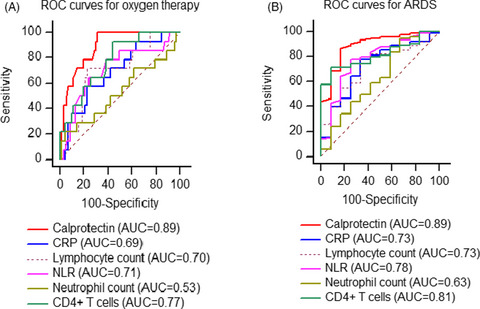
Multiple comparison of receiver operating characteristic (ROC) curve evaluation for the performance of laboratory parameters. (A) ROC curves for discriminating between R1 and R2 groups. (B) ROC curves for discriminating between ARDS− and ARDS+ groups. Multiple comparison of the discriminatory performance of calprotectin with other laboratory parameters between mild and severe groups in the patients with COVID-19. This research revealed that calprotectin's performance surpassed other parameters' performances in predicting COVID-19 severity. Therefore, we suggest that serum calprotectin is a potentially valuable biomarker for predicting the clinical severity of COVID-19, independently or in combination with other conventional parameters. Calprotectin and CRP levels were measured in this research. Lymphocyte count, neutrophil count, NLR and CD4+ T cells count were obtained from the hospital's electronic medical records, in which the data for each parameter was selected within 48 h from the research sample collection time (n = 85). CRP, C-reactive protein; NLR, neutrophil-to-lymphocyte ratio; ARDS, acute respiratory distress syndrome.
The association between famotidine and in‐hospital mortality of patients with COVID‐19
- Journal of Medical Virology
- 1186-1189
- 10.1002/jmv.27375
Elevated acute phase proteins affect pharmacokinetics in COVID‐19 trials: Lessons from the CounterCOVID ‐ imatinib study
Acute urticaria alone after CoronaVac COVID‐19 vaccination should not be a contraindication for revaccination
Establishing a COVID‐19 pandemic severity assessment surveillance system in Ireland
Higher education students' experiences and opinion about distance learning during the Covid-19 pandemic
Aspartate aminotransferase in COVID‐19: A probably overrated marker
- Liver International
- 2809-2810
- 10.1111/liv.15068
SARS‐CoV‐2 RNA stability in dry swabs for longer storage and transport at different temperatures
A Modular Biomaterial Scaffold‐Based Vaccine Elicits Durable Adaptive Immunity to Subunit SARS‐CoV‐2 Antigens
Graphical Abstract
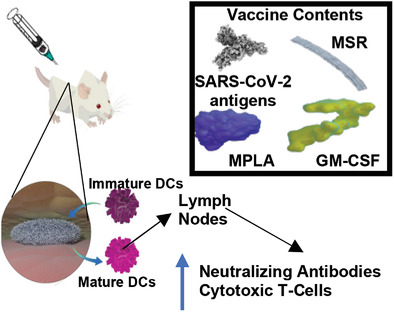
Mesoporous silica rods (MSRs) scaffolds are used as a platform to induce adaptive immunity against SARS-CoV-2 antigens. Sustained delivery of GM-CSF, MPLA, and a variety of SARS-CoV-2 subunit immunogens from the MSR vaccine recruite immune cells into the scaffolds and consistently induce antigen-specific long-lasting antibodies, cytotoxic T lymphocyte responses (CTL), and viral neutralization in vitro.
2020: Looking Back on the Year of COVID
Subacute thyroiditis following COVID‐19 vaccination
Graphical Abstract
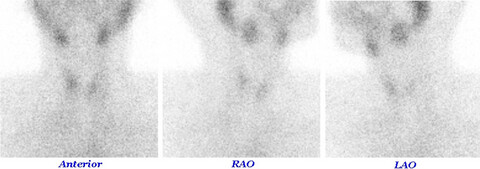
Physicians should be alert about the possibility of subacute thyroiditis (SAT) being induced by COVID-19 vaccination. SAT may present with anterior neck pain, extended fever or palpitation in recently vaccinated patients, which should not be easily dismissed as expected post-vaccination flu-like symptoms, thereby, facilitating in time diagnosis and treatment.
Multidisciplinary approach to a septic COVID‐19 patient undergoing veno‐venous extracorporeal membrane oxygenation and receiving thoracic surgery
Graphical Abstract
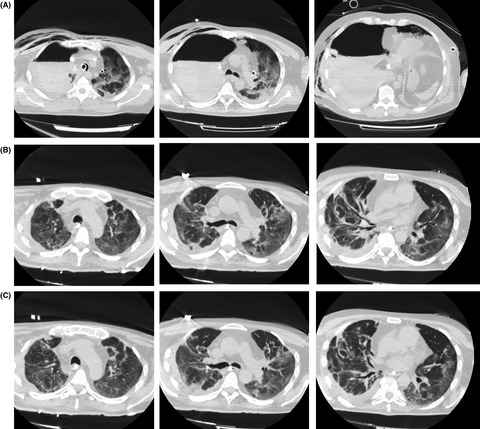
A multidisciplinary approach appears to be fundamental for the treatment of critically ill patients with COVID-19, improving clinical outcomes, even in the most severe cases. Such severe cases are advisable to be collegially discussed between intensivists, surgeons, infectious disease, and other physicians potentially involved.
First report of invasive Aspergillus rhinosinusitis in a critically ill COVID-19 patient affected by acute myeloid leukemia, northeastern Iran
CT patterns and differential criteria for acute eosinophilic pneumonia and COVID‐19 pneumonia
A man with an alcoholic‐related duodenal perforation after losing his job due to the SARS‐COV‐2 pandemic
Adequate immune response after SARS‐CoV‐2 infection and single dose vaccination despite rapid heart transplantation
- ESC Heart Failure
- 5568-5571
- 10.1002/ehf2.13635
The syndemic burden of HIV/AIDS in Africa amidst the COVID‐19 pandemic
Rise of multiattribute decision‐making in combating COVID‐19: A systematic review of the state‐of‐the‐art literature
Thank you, COVID-19: Positive social psychology towards the new normal
The effects of COVID-19 on self-management behaviours and service experiences in type 2 diabetes mellitus
Understanding the environmental factors related to the decrease in Pediatric Emergency Department referrals for acute asthma during the SARS‐CoV‐2 pandemic
Efficacy of Persian medicine herbal formulations (capsules and decoction) compared to standard care in patients with COVID-19, a multicenter open-labeled, randomized, controlled clinical trial
- Phytotherapy Research
- 6295-6309
- 10.1002/ptr.7277
Lichenoid cutaneous skin eruption and associated systemic inflammatory response following Pfizer-BioNTech mRNA COVID-19 vaccine administration
Graphical Abstract

This is a report of a case of generalized lichenoid skin eruptions and systemic inflammatory response occurring together following the first dose of the Pfizer-BioNTech vaccine. This case adds to an accumulating body of literature connecting autoimmunity with the pathophysiology of severe acute respiratory syndrome coronavirus 2 (SARS-CoV-2).
Ultrasound characteristics, serum biochemistry and outcome of ectopic pregnancies presenting during COVID-19 pandemic
Measurements of Volatile Organic Compounds During the COVID‐19 Lockdown in Changzhou, China
Crime under lockdown: The impact of COVID‐19 on citizen security in the city of Buenos Aires
Increasing opium use in Iran in response to unsubstantiated rumors that it protects against COVID‐19
- Addiction
- 1173-1174
- 10.1111/add.15706
Working from home during the COVID-19 crisis: How self-control strategies elucidate employees' job performance
- Applied Psychology
- 853-880
- 10.1111/apps.12352
Holding a stigmatizing attitude at the start of the COVID‐19 outbreak: A cross‐sectional survey
Acute paediatric mastoiditis in the UK before and during the COVID‐19 pandemic: A national observational study
Histological findings of tracheal samples from COVID‐19 positive critically ill mechanically ventilated patients
Bowel ischemia in COVID‐19: A systematic review
Predictive role of FAR ratio in COVID‐19 patients
Evaluation of the effectiveness of the Nutritional Risk Screening System 2002 (NRS‐2002) in COVID‐19 patients admitted to the intensive care unit
What is suitable social distancing for people wearing face masks during the COVID‐19 pandemic?
Herpes zoster viral infection after AZD1222 and BNT162b2 coronavirus disease 2019 mRNA vaccines: a case series
SARS‐CoV‐2 serology in patients on biological therapy or apremilast for psoriasis: a study of 93 patients in the Italian red zone
Telemedicine in the era of coronavirus 19: Implications for postoperative care in cardiac surgery
- Journal of Cardiac Surgery
- 4824-4824
- 10.1111/jocs.16046
Author's response to Verma et al. letter to the editor regarding “Telemedicine in the era of coronavirus 19: Implications for postoperative care in cardiac surgery”
- Journal of Cardiac Surgery
- 4825-4825
- 10.1111/jocs.16047
Age and chronotype influenced sleep timing changes during the first wave of the COVID‐19 pandemic
One‐year changes in the pediatric emergency department caused by prolonged coronavirus disease 2019 pandemic
SARS‐CoV‐2 prevalence and transmission in swimming activities: Results from a retrospective cohort study
Post‐infection pulmonary sequelae after COVID‐19 among patients with lung transplantation
Antibody response to two doses of inactivated SARS‐CoV‐2 vaccine (CoronaVac) in kidney transplant recipients
The unfavorable effects of COVID-19 on Dutch advanced melanoma care
Stroke admissions and revascularization treatments in Denmark during COVID‐19
Beyond ‘drinking occasions’: Examining complex changes in drinking practices during COVID-19
- Drug and Alcohol Review
- 1267-1274
- 10.1111/dar.13386
The safety profile of favipiravir in COVID‐19 patients with severe renal impairment
Transmission of SARS‐CoV‐2 during a 2‐h domestic flight to Okinawa, Japan, March 2020
A review of epidemic investigation on cold-chain food-mediated SARS-CoV-2 transmission and food safety consideration during COVID-19 pandemic
Sleep during COVID‐19‐related school lockdown, a longitudinal study among high school students
Tocilizumab administration for the treatment of hospitalized patients with COVID-19: A systematic review and meta-analysis
- Respirology
- 1027-1040
- 10.1111/resp.14152
The impact of COVID-19 on acute non-invasive ventilation services: A case for change
- Respirology
- 1106-1109
- 10.1111/resp.14156
Outcomes of tocilizumab therapy in severe or critical COVID‐19 patients: A retrospective cohort, single‐centre study
Characterization of SARS‐CoV‐2 and common cold coronavirus‐specific T‐cell responses in MIS‐C and Kawasaki disease children
Graphical Abstract
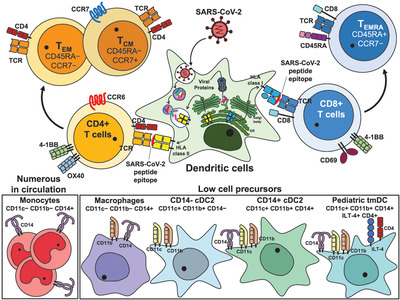
T cells derived from children with multisystem inflammatory syndrome (MIS-C) respond to SARS-CoV-2 spike and nonspike peptide megapools. SARS-CoV-2-specific memory T cells and homing receptors showed different patterns between CD4+ and CD8+ T cells. MIS-C subjects had very low myeloid dendritic cells in circulation including ILT-4+ CD4+ tolerogenic dendritic cells.
Establishing an internal quality control method for the stable extraction of nucleic acids of severe acute respiratory syndrome coronavirus 2 and RT‐PCR‐based detection
Graphical Abstract

Real-time RT-PCR is used in many countries to detect SARS-CoV-2; however, there is no standardized method for quality control during RT-PCR-based detection. Our study showed that the use of a quality control substance (EAV) and quality control charts ensures internal quality control for the extraction of SARS-CoV-2 nucleic acid and the subsequent virus detection.
Prevalence of subjective impairments of the sense of smell and taste in employees of retirement and nursing homes during SARS‐CoV‐2 pandemic
- Nursing Open
- 175-180
- 10.1002/nop2.1005
COVID‐19 as the tipping point for integrating e‐assessment in higher education practices
Protective effect of SARS-CoV-2 preventive measures against ESKAPE and Escherichia coli infections
The effect of COVID‐19 on patients with chronic spontaneous urticaria treated with omalizumab and antihistamines: A cross‐sectional, comparative study
I Think, Therefore I Act: The Influence of Critical Reasoning Ability on Trust and Behavior During the COVID‐19 Pandemic
- Risk Analysis
- 1073-1085
- 10.1111/risa.13833
Spatial Risk Factors for Pillar 1 COVID‐19 Excess Cases and Mortality in Rural Eastern England, UK
- Risk Analysis
- 1571-1584
- 10.1111/risa.13835
SARS‐CoV‐2 Alpha, Beta, and Delta variants display enhanced Spike‐mediated syncytia formation
Incidence of symptomatic image‐confirmed venous thromboembolism in outpatients managed in a hospital‐led COVID‐19 virtual ward
- eJHaem
- 794-798
- 10.1002/jha2.305
The role of media messaging in COVID‐19 vaccine hesitancy amongst the student population: Friend or foe
- Pediatric Pulmonology
- 4066-4068
- 10.1002/ppul.25686
Olfactory dysfunction in children and adults post‐COVID‐19 infection in Brooklyn, New York
- Acta Paediatrica
- 128-129
- 10.1111/apa.16134
Successful use of Impella 5.5 to manage cardiogenic shock complicated by COVID‐19
- Journal of Cardiac Surgery
- 4783-4785
- 10.1111/jocs.16038


